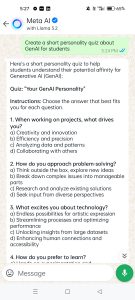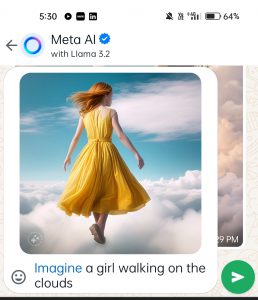Language models have become a cornerstone of artificial intelligence, enabling machines to understand and generate human language like never before. Meta, formerly Facebook, has made significant progress in this field with its series of innovative language models known as LLAMA. Let’s dive into what makes these models so powerful and how they are shaping the future of AI.
Building the Foundation: Base Llama
The Base Llama, released in February 2023, is the initial Llama developed by Meta. This model was designed to provide a foundation for research and experimentation, with a focus on understanding the capabilities and limitations of LLMs. The Base Llama’s key features include:
Parameter sizes:7B, 13B, 33B, and 65 billion parameters
Training dataset: A large, diverse dataset of text from the internet
Capabilities: Text generation, language translation, and basic reasoning
How does Base Llama Work?
- Transformer-based architecture: Llama utilizes the transformer architecture, a neural network design that excels at processing sequential data like text.
- Unsupervised learning: The model was trained on a massive dataset of text and code using unsupervised learning, meaning it learned patterns and relationships within the data without explicit instructions.
- Generative capabilities: Llama can generate text, translate languages, write different kinds of creative content, and answer your questions in an informative way.
The Next Evolution: Llama 2
Building upon the foundation laid by the Base Llama, Llama 2 was released in July 2023. Almost 2 trillion public data tokens (chunks of information) have been used to train the model. It interprets word meanings and intent using this data and then produces output appropriately. This iteration brought significant improvements and enhancements, including:
Parameter sizes: 7B, 13B, and 70B parameters
Enhanced performance: Better accuracy and efficiency in tasks like question answering, summarization, and code generation.
Capabilities: Improved text generation, enhanced reasoning, and fine-tuning for specific tasks
Open access: Llama 2 was made available for commercial and research use, promoting wider adoption and collaboration.
Working of Llama 2
- Similar architecture to Base Llama: Llama 2 retained the transformer-based architecture but with refinements and optimizations
- More data and parameters: Trained on a larger dataset with more parameters, leading to improved performance
- Fine-tuning specific tasks: The availability of fine-tuned versions allowed for better performance in specific areas like dialogue and instruction following
What Sets Llama 2 Apart?
- Llama 2 wasn’t designed for human-like conversation but is great for personalized tasks
- Unlike ChatGPT, Llama 2 offers local downloading capabilities for increased flexibility
- Llama 2 is free, without any token-based charges
- It provides the ability to upload and refine documents, making it extremely flexible
The Game-Changer Llama 3: Setting New Benchmarks
The latest addition to the Llama series, Llama 3, was released on April 18, 2024. Llama-3 offers cutting-edge performance, rivalling top proprietary models. This isn’t a minor update; it sets a new standard for open models, providing everyone access to the best AI, known for its reasoning, code generation, and advanced features.
What’s New in Llama 3?
- Parameters: Available in 8B and 70B parameters
- Data Training: Trained on over 15T tokens with a dataset 7 times larger than Llama 2, making it much more capable
- Performance: Outperforms Llama 2 on benchmarks like MMLU, GSM-K, and HumanEval, showing superior proficiency
- Open Source and Accessible: The models and training procedures are open-source, allowing for easy access, customization, and commercial use.
- Usability: Fully integrated with Meta applications offering a seamless experience, unlike Llama 2
Features & Functions of Llama 3
- Training: LLAMA 3 is trained on a massive dataset of text and code, which is significantly larger than previous Llama models. This allows it to learn complex relationships between words and code.
- Grouped Query Attention (GQA): This new technique improves text generation by focusing on the most relevant parts of the input.
- Instruction Tuning: After pre-training, the model is fine-tuned on specific tasks by providing it with instructions and examples. This refines its ability to follow directions and complete tasks effectively.
- Output: Once it receives input and instructions, LLAMA 3 generates text, translates languages, writes different kinds of creative content, or even produces code.
LLAMA 3 Meta AI Assistant
Llama 3 makes Meta AI the most intelligent free AI assistant. It takes AI assistance to the next level, offering a more thoughtful and capable companion for our daily tasks. This powerful AI assistant is available for free across various Meta apps such as Facebook, Instagram, and WhatsApp, making it accessible to a wider audience and empowering users with intelligent support.
- Seamless Integration Across Meta Apps:
-
- Multi-Platform Availability: Meta AI provides seamless support across various applications such as browsing, chatting, and searching, without the need to switch platforms.
- Increased Efficiency: This integration saves time by offering real-time support and information within each app.
- Faster Image Generation for Your Creative Needs:
-
- Real-time Image Creation: Imagine generating images as quickly as you type. With Llama 3’s advanced image generation capabilities, you can effortlessly transform your concepts into vibrant visual creations.
- Unleash Your Creativity: From album art to decor inspiration or GIFs, create visuals instantly with Llama 3’s advanced image generation.
Experience the Power of Llama 3 at Your Fingertips with Meta AI Assistant:
 |
 |
Conclusion
Meta’s Llama series, from Base Llama to Llama 3, highlights the rapid evolution of large language models. Each version grows in power, versatility, and accessibility. Llama 3 stands out with its impressive performance and inclusive accessibility, representing a significant stride towards integrating AI into everyday activities, fostering innovation and expanding opportunities. As these models advance, they are poised to revolutionize the way we engage with technology and the world around us.




